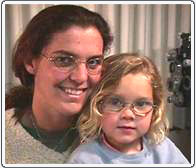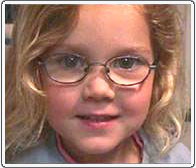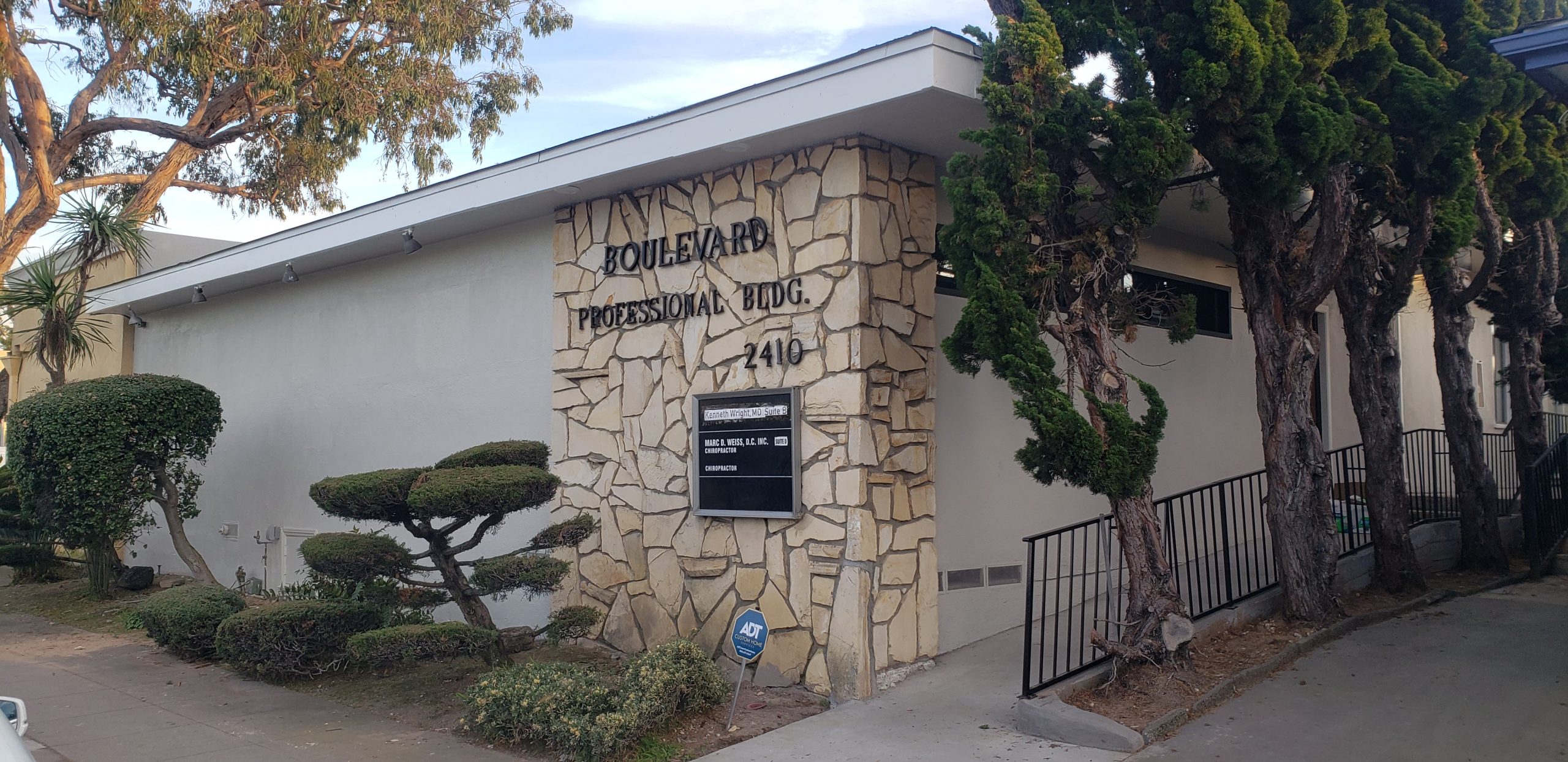
Mom and patient both with hypermetropic anisometropic amblyopia.

Patient with large refractive error in the left eye. Note the magnification effect of the left lens.
Visual Development
A newborn has very poor vision that improves rapidly as eye / brain connections develop in response to early visual experience. A clear, in-focus image is required if we are to develop excellent high-resolution vision and stimulate normal visual development. The most active and critical period for visual development is the first few months of life, although some visual development continues until 6 to 8 years of age. Amblyopia (poor vision) occurs when there is improper visual stimulation during early childhood, and normal visual development is interrupted. Amblyopia is a common cause of decreased vision in childhood, occurring in 1 to 2% of the population.
Anisometropic Amblyopia
Anisometropia is the most common cause of amblyopia and is the result of unequal refractive errors, with one eye worse than the other eye. A refractive error means the optical parts of the eye (such as the lens) are not properly focusing the image and are causing a blurred image in the brain. The term anisometropia means there is a difference in refractive errors between the eyes. If one eye is out of focus compared to the other eye, the better-seeing eye will become dominant, and the child will turn off, or suppress, areas of the brain connected to the blurred eye. The area of the brain that receives the blurred image will mature only to the level that it is stimulated, so stimulation with a blurred image will damage visual development. The greater the image blur and the longer the blur exists, the worse the amblyopia.
Treatment Options
Early treatment is critical to improving poor vision caused by amblyopia in older children. The first aspect of treatment is to provide a clear image using optical correction, either with prescription glasses or contact lenses. Optical correction must be worn full-time during all wakened hours. If the glasses are removed, the vision in the amblyopic eye becomes blurred and interferes with visual development. In some cases, providing a constant clear image alone will improve vision; however, other patients will also require patching of the “good eye.” Patching of the good eye stimulates visual development of the weaker, amblyopic eye. Another way to promote stimulation of the amblyopic eye is to blur the vision of the good eye. This can be done by placing a blurring lens over the good eye or by administering drops to blur the good eye. In most cases, patching with an adhesive patch over the good eye is the most practical treatment.
Optical correction is often required for the long-term, and patching is required until vision improves or the child reaches 7 to 8 years of age. In the vast majority of patients, vision can be improved if the parents and child are compliant with the prescribed treatment.
An alternative therapy to glasses and contact lenses for the treatment of anisometropic amblyopia is to correct the hypermetropic anisometropia with eye laser surgery, such as Photo Refractive Keratectomy (PRK). This laser procedure offers a permanent refractive correction that provides a constantly clear retinal image so that vision and stereo acuity are at the optimum level at all times. For older children who will not wear their glasses or cannot wear a contact lens, excimer laser PRK appears to be a good alternative.

